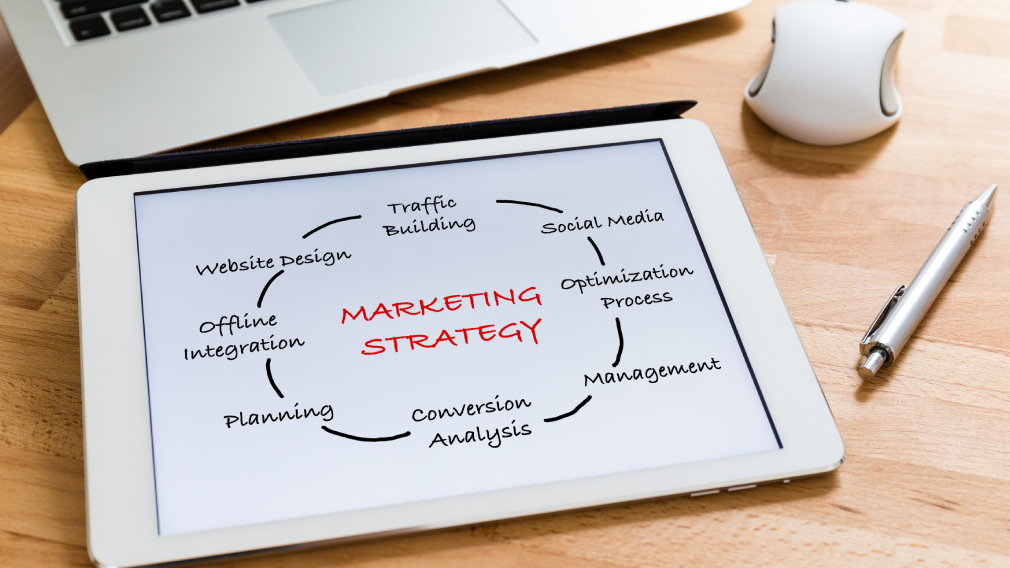If you have been searching for “facebook ads targeting options explained” to help you reach potential customers more effectively, you are in the right place. Successfully targeting your ideal audience on Facebook can feel daunting—especially if you are juggling local lead generation, cost-per-lead (CPL) goals, and a desire to avoid wasting ad spend. By approaching each targeting option with a tailored plan, you can create a supportive environment for potential customers, nurture leads more efficiently, and encourage long-term success in your campaigns. Below, you will find a comprehensive guide that addresses unique challenges, practical strategies, and key pitfalls to avoid when leveraging Facebook Ads targeting for optimal results.
Recognize unique challenges with targeting
Facebook’s advanced targeting tools offer an array of demographic, interest, and behavioral settings to fine-tune your audience. However, these unique capabilities can be a double-edged sword. If you do not approach them carefully, you might burn through your budget without generating truly qualified leads. By understanding the challenges, you will be better equipped to navigate this platform confidently.
The privacy-first world
Over the past few years, Facebook Ads has undergone multiple changes due to stricter privacy regulations and the deprecation of third-party cookies. As WordStream points out, Apple’s iOS 14 updates and other privacy measures have altered the data available for advertisers. This shift can make your initial learning curve steeper, but it also encourages more nuanced strategies that rely on the data you can still gather—like first-party website visits or engagement signals within Facebook itself.
Common pitfalls in small business PPC
Small businesses often face specific challenges, especially when juggling multiple platforms. One recurring problem is trying to copy and paste the same targeting setup on Facebook that worked on other channels. This tactic can lead to disjointed campaigns and wasted spend. Instead, it is crucial to keep your targeting flexible and to view each campaign as an experiment, refining your audience and messaging over time. For further pointers, consider exploring how to set up a google ads campaign if you want to create a seamless, omnichannel PPC strategy that complements your Facebook efforts.
Balancing demographics and funnel stages
Another common challenge is aligning your Facebook audiences with different stages of the buyer’s journey. Targeting cold prospects with complex offers can result in higher CPCs and lower conversion rates. A more supportive, tailored approach involves starting with broader awareness campaigns, then moving prospects into consideration and retargeting phases. If you want to learn more about retargeting on multiple platforms, take a look at how to set up retargeting campaigns.
By acknowledging these challenges, you can begin forming a comprehensive plan that addresses each step in your prospect’s journey, ensuring people feel supported rather than bombarded by irrelevant ads.
Break down demographic options
One of the first layers of Facebook Ads targeting involves demographics. This foundation is based on the information people self-report to Facebook—such as age, gender, education level, and other personal details. Approaching this step with care can create a sense of reassurance for both your brand and prospective audiences.
Basic demographic segments
At a minimum, you can filter your audience by:
- Age range
- Gender
- Location
- Language
Refining these segments ensures you begin by speaking to a group that matches your product or service. For instance, if you run a local roofing company, focusing your ads on homeowners in a specific age bracket can help prevent wasted spend. By narrowing your audience just enough, you can create a more welcoming environment for viewers who see your ad—one that aligns with their immediate interests.
Advanced demographic filters
Facebook offers refined categories such as:
- Education level (college graduates, high school graduates, etc.)
- Relationship status
- Work industry
- Life events (recent birthdays, anniversaries, etc.)
As LeadSync details, there are even more granular categories like “Parents,” “Home,” and “Financial.” By leveraging these details, you can speak directly to your audience’s unique challenges. For example, if your product addresses new parents, referencing their situation in your ad copy creates a supportive tone, showing empathy for their day-to-day concerns.
Practical considerations
Keep in mind that some demographic data might be restricted due to privacy limitations, especially in sensitive areas. Respecting these limitations establishes trust and credibility. By balancing your desire for specificity with an empathetic acknowledgement of user privacy, you can maintain a professional yet approachable tone in all of your ads.
Use interest-based targeting strategies
Interest-based targeting is a powerful way to identify potential leads who engage with specific categories, hobbies, or brand interests. This method is especially helpful for businesses dealing with niche products or services.
Identifying the right interests
Facebook compiles user interests by analyzing Page likes, group memberships, and other engagement signals. According to LeadSync, these can include:
- Business & industry interests
- Fitness & wellness
- Shopping & fashion
- Lifestyle & hobbies
- Technology preferences
You can layer these interests with demographic data to form a “tailored approach.” For instance, if you offer a stress-management app, you might capture men between 30 and 45 who are interested in meditation, wellness apps, and mental health resources. This strategy encourages a supportive environment for prospective customers already curious about what you offer.
Avoiding overly narrow targets
One crucial part of employing interest-based options is ensuring you do not become too granular. Facebook recommends at least a few thousand users in your audience for the algorithm to optimize effectively. A hyper-specific audience can hinder Facebook’s ability to deliver your ads to the right individuals, inflating your costs.
Combining with ad creative
Always align your interest-based targeting with relevant ad creative. For someone who loves fitness classes, your ad might feature people exercising and highlight your product’s benefits in that domain. Tailoring both the audience and the creative fosters understanding, builds empathy, and signals that you acknowledge and respect their needs.
Set up custom audiences effectively
Custom Audiences allow you to target users who have previously interacted with your brand, whether online or offline. Declaring “facebook ads targeting options explained” is incomplete without exploring how Custom Audiences lead to increased conversions and a better return on ad spend (ROAS).
Types of custom audiences
As LeadsBridge notes, there are five major types of custom audiences:
- Website Custom Audiences (pixel-based)
- CRM segments (from your email subscriber list)
- App activity-based audiences
- Offline activity-based audiences (in-store visits, phone interactions)
- Engagement-based audiences (people who have interacted with your Page or ad)
Each type helps you connect with individuals who already displayed interest in your offerings, such as website visitors or mobile app users. By focusing on those who have signaled some level of intent, you can create a more personalized experience and offer the support necessary for lasting success.
Retargeting strategies
Retargeting is a tried-and-true tactic for bringing back visitors who did not convert the first time. This approach can significantly lower your cost per lead because you are rediscovering people who already showed interest. For more details on setting up these campaigns across multiple platforms, explore how to set up retargeting campaigns.
Offline activity inclusion
Even for local businesses with brick-and-mortar storefronts, custom audiences can incorporate offline data. This is particularly useful if you collect customer information from in-store visits or phone orders. Syncing offline and online data creates a comprehensive care strategy that respects each customer’s preferred way of interacting with your brand, building a sense of connection between your ads and real-world touchpoints.
Leverage lookalike audiences wisely
Once you have custom audiences that perform well, you can expand your reach with Lookalike Audiences. Facebook analyzes your existing audience’s common traits—demographics, interests, behaviors—and finds new people who “look like” them.
How lookalike audiences work
As KlientBoost explains, lookalike audiences open the door to fresh prospects by targeting individuals who share similarities with your existing customers. Generally, you select a “source audience” (like a custom audience of your best-performing customers) and define the size of the lookalike segment (1% to 10% of the population in your chosen location).
A smaller percent (e.g., 1%) yields a group that more closely resembles your existing customers, which usually means higher-quality leads. Larger percentages scale your reach but might dilute precision.
Striking a balance
While lookalikes are an excellent option for driving new leads, they are best combined with purposeful creative and messaging. Avoid overwhelming prospective clients, and maintain a supportive tone that eases them into learning about your brand. If you are advertising a service-based business, for example, guide new audiences to a dedicated page—a step that fosters trust and makes them more receptive to your offer.
Refreshing source audiences
For your lookalike audiences to remain effective, you need an up-to-date source. Continuously refine and update your original custom audience. If you move into new markets, collect new leads, or develop improved conversion metrics, refresh your source to ensure your lookalike remains relevant and accurate.
Combine multiple targeting layers
Facebook’s real power often emerges when you combine demographic, interest, and behavioral data in an integrated way. This layered approach is the essence of a tailored treatment plan for your audiences, offering them the right message at the right time.
Case example: Local fitness studio
Suppose you run a men’s fitness studio that focuses on strength training and general health. You might layer:
- Demographics: Men, ages 25-50, within a 10-mile radius of your business
- Interests: Gym memberships, weightlifting, and nutrition
- Behaviors: Frequent purchase of health supplements
By layering these factors, you create a highly relevant audience—one that resonates with your brand’s values and vibe. This approach fosters camaraderie with prospective clients because they see ads that speak precisely to their fitness and wellness interests, ultimately encouraging them to explore your services.
Using Exclusion targeting
When layering, it is equally important to use exclusions to filter out irrelevant or unqualified leads. For example, if your product is a premium offering, you might exclude certain behavior segments that indicate a user tends to respond only to discount offers. This can optimize your budget and ensure that your ads focus on people more likely to convert.
Tailoring creative for each layer
Personalizing your ad creative for each targeting layer can be an effective way to provide the “supportive environment” that fosters engagement. If you know your audience values wellness, you can highlight a safe training environment, professional coaching, or community connections. You might even link them to how to create a facebook ad funnel that guides prospects through multiple stages of engagement, offering them relevant content with each interaction.
Measure and refine performance
Even the most meticulously built targeting strategy must be monitored, measured, and refined. This is typically where the conversation shifts from initial targeting setups to continuous improvement and advanced optimizations.
Tracking key metrics
Critical metrics for Facebook Ads include:
- Click-through rate (CTR)
- Cost per click (CPC)
- Cost per lead (CPL)
- Conversion rate (CVR)
- Return on ad spend (ROAS)
Higher CTRs may indicate your message is resonating, while low CTRs might prompt you to adjust either your audience or creative. If you notice a higher-than-expected CPC, reevaluate your targeting layers to ensure you are not excessively narrowing the audience. For more insight on measuring cross-platform ROI, you can consult how to track roi from paid advertising.
A/B testing and experimentation
A core element of refining Facebook targeting is split testing creative, audiences, and placements. You can run A/B tests by varying just one element—like demographic targeting or ad copy—to identify what resonates best. As Foreplay emphasizes, you can also leverage native Facebook tools, such as Automated Rules or Campaign Budget Optimization, to streamline these processes.
If you want to learn more about systematically experimenting with ad components, refer to how to split test ad creatives. Regular testing fosters an empowering atmosphere, allowing you to learn from your campaigns rather than fearing failure.
Continuous funnel alignment
As you gather more data, keep aligning your targeting with each funnel stage. This might mean using broader audiences for awareness, retargeting for consideration, and lookalikes for prospecting new leads. By offering individualized plans to each segment, you deliver exactly what they need at each moment—a crucial component of comprehensive care in digital advertising.
Embrace continuous improvement
Facebook Ads targeting is not a one-time task. It is an ongoing journey that involves listening to your audience, adjusting your targeting as behaviors shift, and gradually optimizing your strategy for better lead quality and lower costs.
Evolving privacy safeguards
With privacy changes evolving regularly, be prepared to pivot your targeting strategy. Continue to collect and organize first-party data—like website traffic and conversions—so you can adapt when new regulations limit third-party data. This can help you maintain a stable pipeline of qualified leads.
Omnichannel synergy
While Facebook Ads offer robust targeting options, combining these strategies with Google, YouTube, or TikTok can create an even more supportive environment. Each platform has unique strengths, and your overall PPC strategy benefits from synergy between them—especially when aiming for local lead generation. If you want a deeper dive, facebook ads strategy for local businesses can show how to unify brand messaging across channels.
Common mistakes to avoid
- Going too broad with no specific audience in mind
- Over-segmenting, leaving Facebook’s algorithm with very small audiences
- Overlooking the different funnel stages when creating ad sets
- Neglecting to update custom audiences and source data
By consciously avoiding these pitfalls, you can maintain a steady rhythm in your campaigns and ensure you are using each targeting tool responsibly.
Final thoughts and next steps
Mastering Facebook Ads targeting does not require you to be an expert right away. It does require patience, empathy for your audience’s needs, and a commitment to continuous learning. When you blend demographic, interest, behavioral, custom, and lookalike strategies, you offer genuine support to potential customers—making them more open to your message.
As you work toward refining your campaigns, remember:
- Begin with a broad yet relevant demographic layer.
- Layer on interests and behaviors for a more nuanced approach.
- Use custom and lookalike audiences to connect with people who already show interest.
- Measure your performance consistently, adjusting as needed.
- Adapt to privacy changes and keep your targeting aligned with each funnel stage.
By embracing these principles, you nurture a campaign environment where prospects feel acknowledged and understood. This sets the foundation for more meaningful connections and ultimately leads to sustainable, long-term ad performance. If you are interested in refining your broader PPC plan, consider reading how to set up a google ads campaign or exploring how to optimize ad landing pages for conversions. Cultivating an omnichannel approach ensures your resources are spent wisely, your leads remain high-quality, and your message resonates across every platform.















